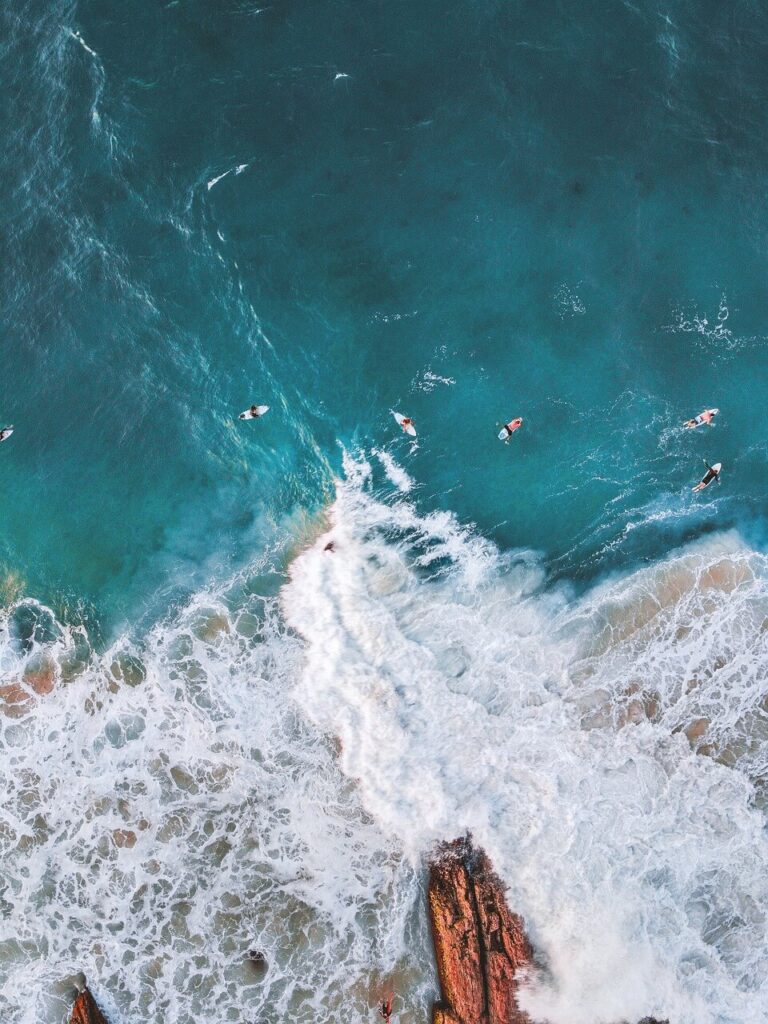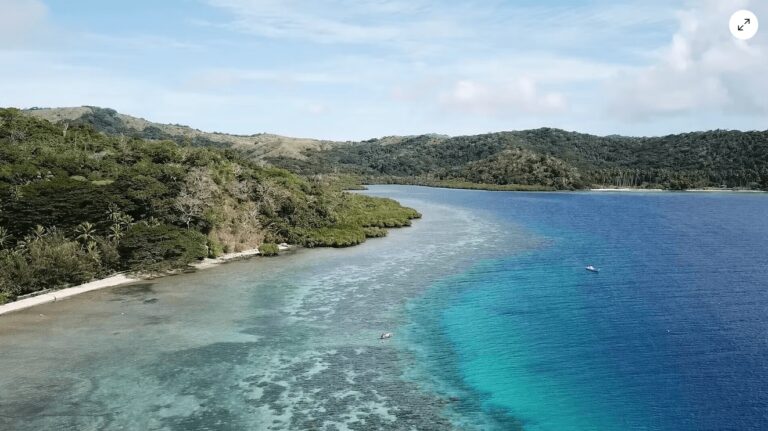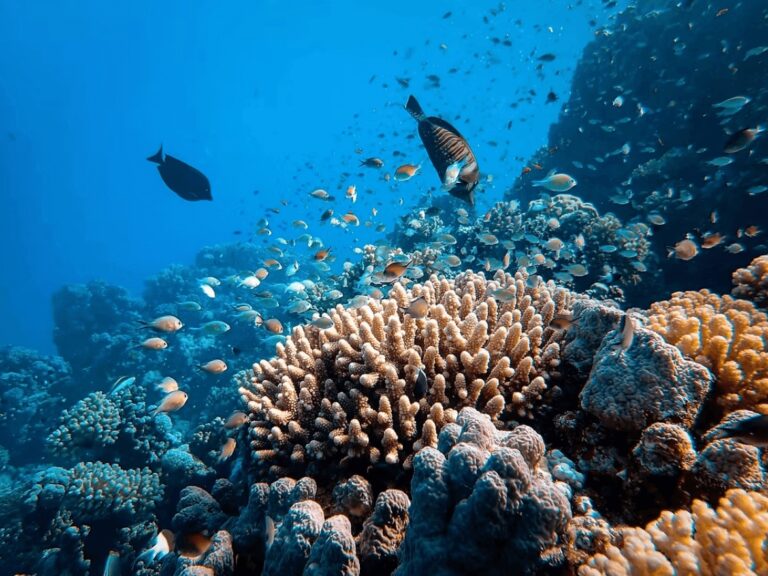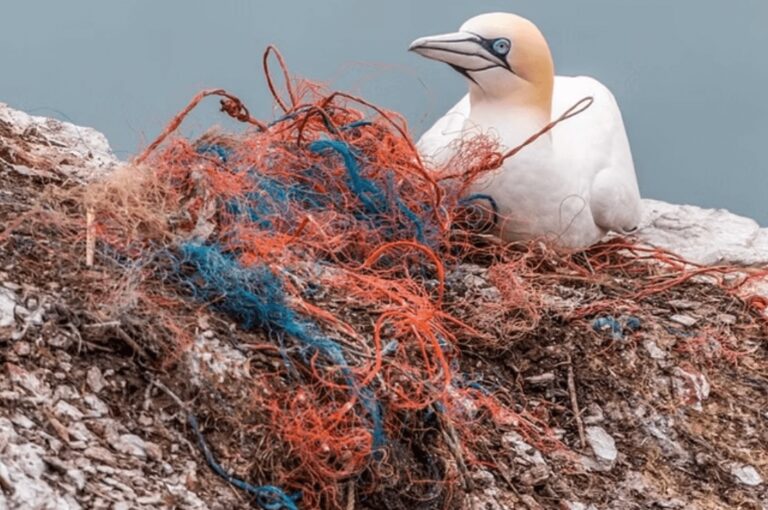Surfboard Carbon Footprints + How to Reduce Your Impact
Concerned about the environmental impact of surfboards? Discover everything you need to know about the carbon footprint of surfboards and steps you can take to reduce yours.
Over the past few decades, the pursuit of low-cost, high-performance surfboards to meet the demands of a growing number of surfers worldwide has led to major evolutions in surfboard manufacturing.
What was once dominated by local shapers hand-crafting beautiful (but often pricey) boards has now shifted to the mass production of inexpensive, disposable boards.
Yes, this production enables more people to enjoy surfing (and allows surfers to accumulate more boards). But the environmental impact of surfboards is high.
It’s estimated that around 500,000 new surfboards are sold each year globally. In fact, the industry was worth US$3.05 billion in 2024.
To keep costs low, major surf brands have moved to automated shaping machines and offshore factories. Many churn out boards modelled after short-lived disposable consumer goods.
While this achieves affordability, the premium quality of hand-shaped custom boards is being lost. Plus, the surfboard manufacturing environmental impact is beyond denial.
In this article, learn about the shocking reality of surfboard carbon footprints and how you can reduce your impact by being a conscious surf consumer.
For more insights into marine conservation issues, check out our collection of articles here. They focus on everything from ocean acidification and mercury pollution to coral bleaching and the Great Pacific Garbage Patch.

How carbon-emitting are surfboards?
At first glance, a surfboard seems like a simple slab of fiberglass and foam – something that’s relatively harmless to the planet.
However, the manufacturing process involves numerous greenhouse gas-emitting steps that can collectively have a big impact.
Experts have calculated that a typical 6-foot shortboard generates around 165 kilograms of carbon dioxide over its lifetime. In total, this equates to the same emissions as driving a petrol vehicle for around 700 kilometres (435 miles).
The largest share of a surfboard’s carbon footprint (54% or 89kg) stems from daily usage and maintenance. This includes the energy-intensive resin and paint jobs required to keep boards waterproof.
The foam blank and fiberglass cloth that give the board its shape and structure are the next biggest contributors. These generate 49.5kg of CO2 (roughly 30% of a board’s lifetime emissions).
The remaining sources, like construction, waste and distribution make up the remaining 25% combined. As you can see, the environmental impact of surfboards is huge!
For a closer look at this breakdown, check out WaveChanger’s detailed explainer here.
It’s important to keep in mind that surfboards are notoriously difficult to take apart for recycling. Understandably, this poses a major environmental challenge when it comes to their end of life.
The core of a surfboard is a foam blank, often made from polystyrene. Within this blank lies a central timber support piece called a stringer, which provides structure.
Enveloping the foam blank is a tough outer shell of polyester or epoxy resin. This is reinforced by layers of fibreglass cloth set within the resin. Other components, like fin boxes and a leash plug, are glued into the resin as well.
This complex, layered construction of foam, wood, resin, fibreglass and adhesives bonds everything tightly together. But at the same time, it makes disassembly for recycling extremely difficult, if not impossible.
Polystyrene foam is, in itself, an issue. It’s estimated to take between 500 and one million years to fully biodegrade.
Over time, it breaks down into microplastics that widely disperse. These often end up in our oceans and negatively impact marine life.
Additionally, epoxy and polyester resins are highly resistant to degradation and leave behind a lasting environmental impact.
Want to plan a sustainable surf trip to Indo? Check out 10 of the best eco-friendly surf resorts in the archipelago.

How to reduce your surfboard carbon footprint
The issues surrounding the carbon impact of surfboards need to be tackled by both surfboard manufacturers and consumers. From our perspective, there will be little progress if both aren’t on board.
Some shapers are looking to make sustainable surfboards from locally sourced and alternative materials in place of harmful, petroleum-based substances. Others are drawing on recycled materials (rather than virgin resources) in their workshops.
But if surfers aren’t willing to pay for more eco-friendly surfboards or seek them out, these innovations won’t make an impact.
So the next time you’re in the market for a new board, consider investing in our environment by purchasing a sustainable surfboard.
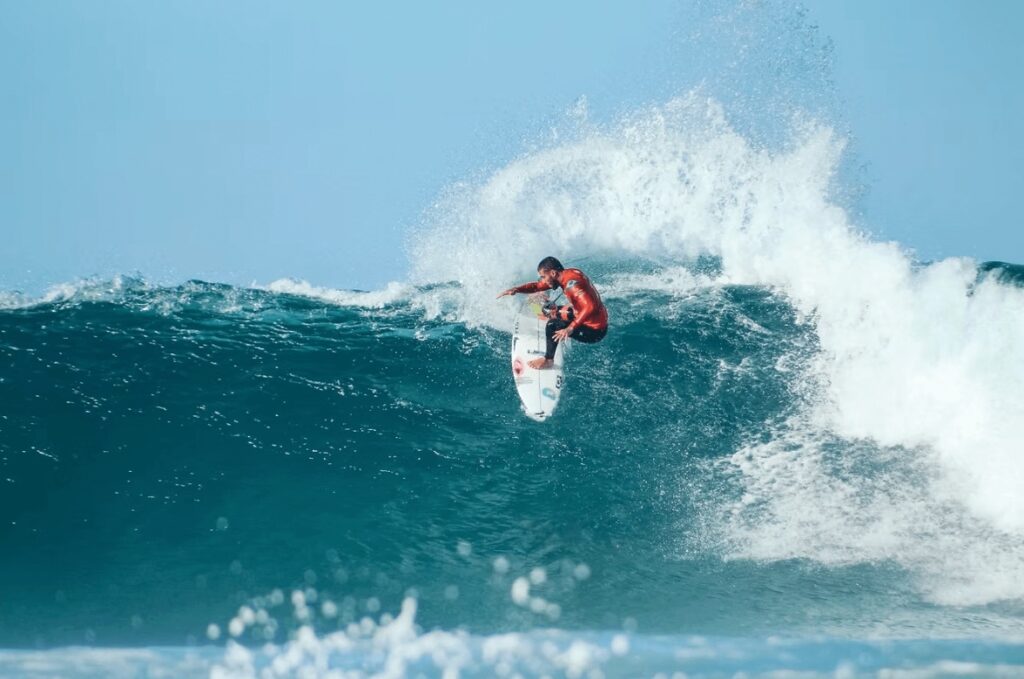
Below are a few things to keep in mind to reduce the impact of your surfboard purchases on the environment:
- Rather than looking to replace a board when it’s broken, try and reduce the carbon footprint of its lifetime usage by carrying out maintenance and taking care of it in between surfs.
- Consider buying cork traction panels and reef-friendly wax to reduce the amount of toxic waste you are producing.
- Reduce the frequency and distance of surf-related travel whenever possible.
- Before buying any new board, think about how it will be used over its lifetime and the options for disposing of it responsibly at the end.
If none of the above is possible, offset your surfboard carbon footprint and surf travel emissions with a verified carbon credit system (such as Carbonhalo) to become carbon neutral. The money is invested into certified climate projects and the planting of trees to help absorb the carbon being emitted.
Preventing emissions in the first place is preferable. But carbon credit systems can play an important role in offsetting damages.
NB: Data in this article was compiled by Carbonhalo and published by Wavechanger, a sustainability-driven program run by Surfers for Climate. The data used in the report is primarily from Australian sources and is supplemented by information from industry bodies and emissions databases around the world.
Looking for more surf inspiration? From Morocco to the Maldives, discover 11 of the world’s best surf destinations.

PLAN YOUR TRIP WITH OUR FAVOURITE RESOURCES:
Find hotels and resorts via Booking or Agoda
Book tours and experiences via Viator or GetYourGuide
Find a rental car via Discover Cars
Book flights via Kiwi or Booking
Search for buses and trains via 12Go or Omio
Get travel insurance via SafetyWing
Buy a digital eSIM with Airalo
By purchasing through our links, you’ll be supporting our website at no additional cost to you
About the authors
We are a team of passionate divers and surfers with decades of combined experience in the water and travelling to all corners of the globe. After years of chasing waves and descending into the deep blue, we’ve created this resource to highlight sustainably run surf camps, eco-friendly dive resorts and conservation-focused ocean trips to help inspire your next adventure.
Eco Ocean Escapes was born out of a love of the ocean, an obsession with travel and a concern about the impacts of our adventures on the environments we explore. Despite the benefits that surf and dive tourism can bring to local communities, we recognised that ocean-based adventures are not always managed in a sustainable manner.
Through our articles, we hope to inspire those seeking a responsible surf or dive trip that is all about supporting local communities, preserving our coastal environments and the incredible marine species that inhabit our oceans.
-
Sustainable Surf Tourism and Respecting Local Communities
Surf tourism has exploded over the last two decades. With travel becoming more accessible and social media exposing hidden spots, once-remote breaks in Indonesia, Central America, Morocco and the Pacific Islands are now iconic stops on global surf circuits. While surf travel brings income, jobs and global attention to coastal towns, it can also disrupt…
-
Inspiring Citizen Science Projects for Surfers + How to Get Involved
As surfers, we are intimately connected to the ocean – its rhythms, its wildlife and its health. Because of this relationship, many of us are looking for meaningful ways to protect the marine environments we love. One of the simplest and most impactful ways we can do this is by joining citizen science projects. These…
-
Understanding Marine Protected Areas (MPAs): Why divers should care
If you’ve spent time underwater (as a diver or snorkeller), you’ve probably noticed something: not all sites are beacons of health. Some reefs appear vibrant and full of life, while others show signs of stress – broken coral, few fish or algae-covered rocks. One of the biggest factors shaping the health of our oceans is…
-
Costa Rica: Best Marine Parks for Scuba Divers + Eco Dive Resorts
Costa Rica is a paradise for eco-conscious travellers and underwater explorers are no exception. With its healthy coral reefs, pelagic-rich waters and some of the most progressive environmental policies in the world, the country is a dream destination for those who want to dive responsibly. We’ve been lucky enough to visit Costa Rica several times…
-
Eco-Diving: Best Destinations for Sustainable Scuba Travel
As humans inspired by the underwater world, there is plenty of incentive to protect our coral reefs. Here at EcoOceanEscapes, we want to do our bit to save endangered marine species and keep our oceans free of trash. One impactful action we can all take is to choose sustainable diving destinations. These are nations (or…
-
Eco-Friendly Diving: How to Be a Sustainable Scuba Advocate
Understand the environmental impacts of diving and sustainable scuba practices in this comprehensive guide to eco-friendly diving. Any diver will tell you that being underwater is an incredible experience. It’s a world that not everyone has the opportunity to explore and the encounters we have with marine creatures can be life-changing. Watching manta rays soar…

We are a team of passionate divers and surfers with decades of combined experience in the water and travelling to all corners of the globe.
After years of chasing waves and descending into the deep blue, we’ve created this resource to highlight sustainable surf camps, eco-dive resorts and conservation-focused ocean trips to help inspire your next adventure.
Eco Ocean Escapes was born out of a love of the ocean, an obsession with travel and a concern about the impacts of our adventures on the environments we explore.

